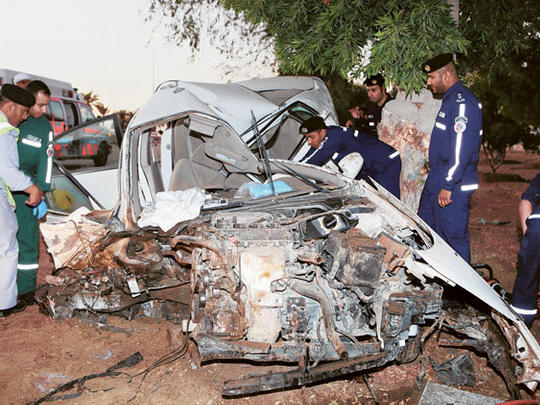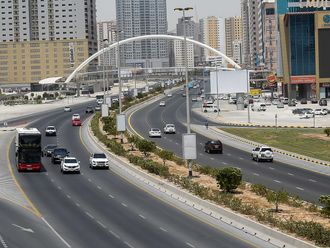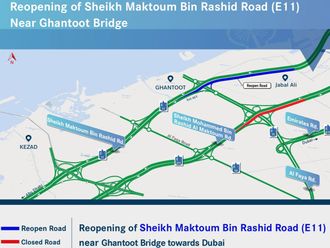
Abu Dhabi The number of traffic-related deaths in Abu Dhabi fell from 376 in 2010 to 334 in 2011, or 13 people per 100,000 inhabitants, police have said.
Accidents in which people were run over fell by 21 per cent per 100,000 inhabitants as well.
The decrease has been linked to a comprehensive traffic plan which targeted a total of 31,000 people in an emirate where the number of vehicles went up by 6 per cent compared to 2010. The plan included 12 traffic awareness programmes, 331 awareness lectures and 30 traffic exhibitions.
"Revamping our traffic accidents database system and the several initiatives and campaigns have led to this tangible achievement that in turn is an incentive to step up our efforts to further ensure roads safety in the emirate," said Brigadier Hussain Al Harthi, director of the Traffic and Patrols Directorate at the Abu Dhabi Police.
The ‘Reduce Accidents on the Abu Dhabi, Al Salaa and Hamim Roads Campaign' resulted in a 26 per cent fall in traffic-related deaths on the Al Salaa and Hamim roads.
Another campaign targeting the ten most dangerous roads in the emirate led to a 6 per cent fall in fatalities on these roads. Some of these include the highways from Abu Dhabi to Ghuwaifat, Dubai, Al Ain, Suwaihan, and the road from Suwaihan to Al Ain, in addition to roads within the capital such as the Tourist Club road, Zayed First road and Airport road, Al Harthi added.
Al Harthi explained that 24-hour patrols were being deployed to ensure safety on roads across the emirate. In addition, a strict traffic fine system, road engineering and an advance radar net were factors that contributed to this decrease.
In cooperation with the Abu Dhabi Education Council (Adec), a civic traffic education subject was integrated as part of the school curriculum.
Main reasons
The main reasons behind traffic accidents across Abu Dhabi remain jaywalking, speeding, not leaving sufficient space between vehicles, jumping lanes, unsafe road entry tendencies by motorists, a lack of attention and the jumping of red lights.
Al Harthi said: "2012 will be the year of awareness. Several specialised initiatives will take place this year targeting each category of people separately like workers, children, families, drivers, etc."
"One of the initiatives will target illiterate people. Initiatives and campaigns will not be [limited to] brochures and flyers only but [will extend to] Facebook, Twitter and all those social networks that people tend to use more than just reading paper material," he added.
"Our goal is to reach one to two fatalities per 100,000 by the end of 2012. We started in 2009 at 4.4 and we are now at 2.2."
Statistics: Tragic loss of lives
An estimated 1.5 million fatalities worldwide were recorded due to traffic accidents.
At least 500,000 traffic accidents in the Arab world result in 36,000 deaths and 400,000 injuries yearly.
Roads accidents in the GCC countries led to 8,500 deaths in 2010 and around 65,000 people injured.
Around 7,500 traffic accidents were recorded across the UAE in 2010 that left 800 deaths and 9,000 people injured.
Fatalities in the emirate of Abu Dhabi dropped by 16 per cent per 10,000 vehicles and by 19 per cent per 10,000 driving licence holders.












